Application of the EFQM Model to Assess the Readiness and Sustainability of the Implementation of I4.0 in Slovakian Companies
Abstract
1. Introduction
2. Materials and Methods
2.1. Exceptionality Criteria
2.2. Model of Organization Readiness for Industry 4.0
3. Results
4. Discussion
Author Contributions
Funding
Acknowledgments
Conflicts of Interest
Appendix A
| Criterion | Analysis of Integration of Complex Safety (Safety and Security) into Management Systems—ISMS | Max Points | Frequency | ||||
|---|---|---|---|---|---|---|---|
| Scale | |||||||
| a | b | c | d | e | |||
| L | Does the top management encourage the idea of integrated safety in your organisation? | 4 | 6 | 3 | 19 | 9 | 16 |
| L | Is a responsible representative for integrated safety management appointed? | 4 | 6 | 9 | 13 | 8 | 17 |
| Pe | Is there a procedure created for training in the area of integrated safety? | 4 | 8 | 7 | 11 | 10 | 17 |
| Pe | Does the requirement for education apply to all levels of organisation management? | 4 | 8 | 5 | 12 | 7 | 21 |
| S | Are there plans for integrated safety implementation? | 4 | 6 | 7 | 9 | 21 | 10 |
| S | Are the implementation plans regularly revaluated and corrected? | 4 | 9 | 11 | 6 | 27 | - |
| S | Are the integrated safety implementation plans in accordance with process management (or particular implementation steps identifiable according to map of processes)? | 3 | 7 | 6 | 8 | 17 | 18 |
| Pa | Have conditions been created for the cooperation with an external organisation in the area of integrated safety implementation? | 4 | 16 | 4 | 14 | 19 | - |
| Pa | Are the activities/areas provided by the external organisation clearly defined? | 3 | 14 | 10 | 16 | 5 | 8 |
| Pr | Is there an implemented process of OHS and Security management system integration into management systems? | 4 | 3 | 10 | 13 | 12 | 15 |
| Pr | Is there a documented risk management process as a basic tool of management systems (RbT)? | 4 | 5 | 8 | 18 | 8 | 15 |
| Pr | Is the process improvement based on integrated approach? | 4 | 2 | 8 | 17 | 8 | 18 |
| Pr | Is there a software support oriented to integrated safety? | 4 | 15 | 10 | 8 | 10 | 10 |
| Analysis of Impact of Digitalization on OHS–OHSd | |||||||
| L | Does the management encourage the implementation of automation and digitalization for OHS support? | 4 | 2 | 8 | 12 | 12 | 19 |
| L | Is there a responsible representative for OHSd support appointed? | 4 | 18 | 3 | 9 | 10 | 13 |
| L | Are there OHS politics and goals defined, in which automation and digitalization implementation are reflected? | 4 | 16 | 5 | 11 | 14 | 7 |
| Pe | Is there employee training provided in the area of OHSd implementation? | 4 | 12 | 17 | 9 | 8 | 7 |
| Pe | Does the requirement for education in OHSd apply to all levels of organisation management? | 4 | 19 | 13 | 9 | 4 | 8 |
| S | Are there plans for OHSd implementation? | 4 | 17 | 11 | 10 | 11 | 4 |
| S | Are the implementation plans regularly revaluated and corrected? | 3 | 19 | 17 | 6 | 11 | - |
| Pa | Is the requirement for OHSd communicated and revaluated with involved parties? | 4 | 9 | 12 | 12 | 9 | 11 |
| Pa | Have conditions been created for the cooperation with an external organisation in the area of OHSd implementation? | 4 | 28 | 13 | 8 | 4 | - |
| Pa | Are the activities/areas provided by the external organisation in OHSd clearly defined? | 3 | 27 | 7 | 10 | 5 | 4 |
| Pr | Is there an OHSd implementation process based on process approach? | 4 | 13 | 17 | 12 | 5 | 6 |
| Pr | Is the improvement of OHSd processes based on integrated approach? | 4 | 18 | 10 | 18 | 2 | 5 |
| Pr | Are there sources for the provision of I4.0 elements into OHSd? | 4 | 19 | 15 | 9 | 8 | 2 |
References
- Ślusarczyk, B. Industry 4.0—Are we ready? Pol. J. Manag. Stud. 2018, 17, 232–248. [Google Scholar] [CrossRef]
- Kagermann, H. Change Through Digitization Value Creation in the Age of Industry 4.0. In Management of Permanent Change, 1st ed.; Albach, H., Meffert, H., Pinkwart, A., Reichwald, R., Eds.; Springer Gabler: Wiesbaden, Germany, 2015; pp. 23–45. ISBN 978-3-658-05013-9. [Google Scholar]
- Tupa, J.; Simota, J.; Steiner, F. Aspects of Risk Management Implementation for Industry 4.0. Procedia Manuf. 2017, 17, 1223–1230. [Google Scholar] [CrossRef]
- Blecha, P.; Durakbasa, N.; Holub, M. Digitized Production—Its Potentials and Hazards. In Proceedings of the International Symposium for Production Research, 1st ed.; Durakbasa, N., Gencyilmaz, M., Eds.; Springer: Charm, Switzerland, 2018; pp. 402–411. ISBN 978-3-319-92266-9. [Google Scholar]
- Voigt, K.I.; Müller, J.; Veile, W.J.; Becker, W.; Stradtmann, M. Industrie 4.0—Risiken für kleine und mittlere Unternehmen. In Geschäftsmodelle in der Digitalen Welt, 1st ed.; Becker, W., Eierle, B., Fliaster, A., Ivens, B., Leischnig, A., Eds.; Verlag Gabler: Berlin, Germany, 2018; Volume 2, pp. 517–538. ISBN 978-3-658-22128-7. [Google Scholar]
- Kyasanur, K. Sustainability impact of digitization in logistics. In 15th Global Conference on Sustainable Manufacturing, Procedia Manufacturing 21; Elsevier B.V.: Amsterdam, The Netherlands, 2018; pp. 782–789. [Google Scholar] [CrossRef]
- Brzezińska, D.; Bryant, P.; Markowski, A.S. An Alternative Evaluation and Indicating Methodology for Sustainable Fire Safety in the Process Industry. Sustainability 2019, 11, 4693. [Google Scholar] [CrossRef]
- Ramirez-Peňa, M.; Sotano, A.J.S.; Peréz-Fernandéz, V.; Abad, F.J.; Batista, M. Achieving a sustainable shipbuilding supply chain under I4.0 perspective. J. Clean. Prod. 2020, 244, 2954–2972. [Google Scholar] [CrossRef]
- Maletič, M.; Maletič, D.; Dahlgaard, J.J.; Dahlgaard-Park, S.M.; Gomišček, B. Effect of sustainability-oriented innovation practices on the overall organizational performance: An empirical examination. Total Qual. Manag. Bus. Excell. 2016, 27, 1171–1190. [Google Scholar] [CrossRef]
- Urbančíková, N.; Zgodavová, K. Resilience and Population Ageing along Schengen’s Eastern Border. Sustainability 2019, 11, 2898. [Google Scholar] [CrossRef]
- Grenčíková, A.; Kordoš, M.; Sokol, J. The Approach to Industry 4.0 within the Slovak Business Environment. Soc. Sci. 2019, 8, 104. [Google Scholar] [CrossRef]
- Ganzarain, J.; Errasti, N. Three stage maturity model in SME’s toward industry 4.0. J. Ind. Eng. Manag. (JIEM) 2016, 9, 1119–1128. [Google Scholar] [CrossRef]
- Ning, H.; Liu, H. Cyber-physical-social-thinking space-based science and technology framework for the Internet of Things. Sci. China Inf. Sci. 2015, 58, 1–19. [Google Scholar] [CrossRef]
- Zhang, J.J.; Wang, F.Y.; Wang, X.; Xiong, G.; Zhu, F.; Lv, Y.; Hou, J.; Han, S.; Yuan, Y.; Lu, Q.; et al. Cyber-Physical-Social Systems: The State of the Art and Perspectives. IEEE Trans. Comput. Soc. Syst. 2018, 5, 829–840. [Google Scholar] [CrossRef]
- Bangemann, T.; Riedl, N.; Tgron, M.; Dietrich, C. Integration of Classical Components into Industrial Cyber–Physical Systems. Proc. IEEE 2016, 104, 947–959. [Google Scholar] [CrossRef]
- Bartodziej, C.J. The concept Industry 4.0. In The Concept Industry 4.0. BestMasters, 1st ed.; Springer Gabler: Wiesbaden, Germany, 2017; pp. 27–50. ISBN 978-3-658-16501-7. [Google Scholar]
- Park, S.H.; Shin, W.S.; Park, Y.H.; Lee, Y. Building a new culture for quality management in the era of the Fourth Industrial Revolution. Total Qual. Manag. Bus. Excell. 2017, 28, 934–945. [Google Scholar] [CrossRef]
- Voigt, K.I.; Müller, J.M.; Veile, J.W.; Becker, W.; Stradtmann, M. Industrie 4.0 für kleine und mittlere unternehmen. In Geschäftsmodelle in der Digitalen Welt, 1st ed.; Springer Gabler: Wiesbaden, Germany, 2018; pp. 517–538. ISBN 978-3-658-22128-7. [Google Scholar]
- Pfeiffer, S. Berufliche Bildung 4.0? Ueberlegungen zur Arbeitsmarkt-und Innovationsfaehigkeit. Ind. Bezieh. 2016, 23, 25–44. [Google Scholar] [CrossRef]
- Veile, J.W.; Keil, D.; Muller, J.M.; Voigt, K.I. Lessons learned from Industry 4.0 implementation in the German manufacturing industry. J. Manuf. Technol. Manag. 2019, 35, 21. [Google Scholar] [CrossRef]
- The EFQM Model. EFQM 2019. Available online: https://www.efqm.org/index.php/efqm-model/ (accessed on 14 May 2020).
- Nenadál, J. The New EFQM Model: What is Really New and Could Be Considered as a Suitable Tool with Respect to Quality 4.0 Concept? Qual. Innov. Prosper. 2020, 24, 17–28. [Google Scholar] [CrossRef]
- Suárez, E.; Calvo-Mora, A.; Roldán, J.L.; Periáñez-Cristóbal, R. Quantitative research on the EFQM excellence model: A systematic literature review (1991–2015). Eur. Res. Manag. Bus. Econ. 2017, 23, 147–156. [Google Scholar] [CrossRef]
- Andersen, H.; Lawrie, G.; Shulver, M. The Balanced Scorecard vs. the EFQM Business Excellence Model. 2GC Working Paper; 2GC Active Management, 2003. Available online: http://members.home.nl/j.s.sterk/AQM/BalancedScorecardVsBusinessExcellenceModel.pdf. (accessed on 10 May 2020).
- Westlund, A.H. Measuring environmental impact on society in the EFQM system. Total Qual. Manag. 2001, 12, 125–135. [Google Scholar] [CrossRef]
- Alfaro-Saiz, J.J.; Carot-Sierra, J.M.; Rodríguez-Rodríguez, R.; Jabaloyes-Vivas, J.M. Seeking organizational excellence by using the information coming from the EFQM excellence model as starting point: Application to a real case. Total Qual. Manag. Bus. Excell. 2011, 22, 853–868. [Google Scholar] [CrossRef]
- Vukomanovic, M.; Radujkovic, M. The balanced scorecard and EFQM working together in a performance management framework in construction industry. J. Civ. Eng. Manag. 2013, 19, 683–695. [Google Scholar] [CrossRef]
- Fonseca, K.M. Relationship between ISO 9001 certification maturity and EFQM business excellence model results. Qual. Innov. Prosper. 2015, 19, 85–102. [Google Scholar] [CrossRef]
- Zgodavova, K.; Hudec, O.; Palfy, P. Culture of quality: Insight into foreign organizations in Slovakia. Total Qual. Manag. Bus. Excell. 2017, 28, 1054–1075. [Google Scholar] [CrossRef]
- Hanulakova, E.; Dano, F. Circular Economy as a New Managerial Approach. AD ALTA-J. Interdiscip. Res. 2018, 8, 95–98. [Google Scholar]
- Alavi, M.; Leidner, D. Knowledge Management and Knowledge Management Systems: Conceptual Foundation and An Agenda for Research. MIS Q. 2001, 25, 107–136. [Google Scholar] [CrossRef]
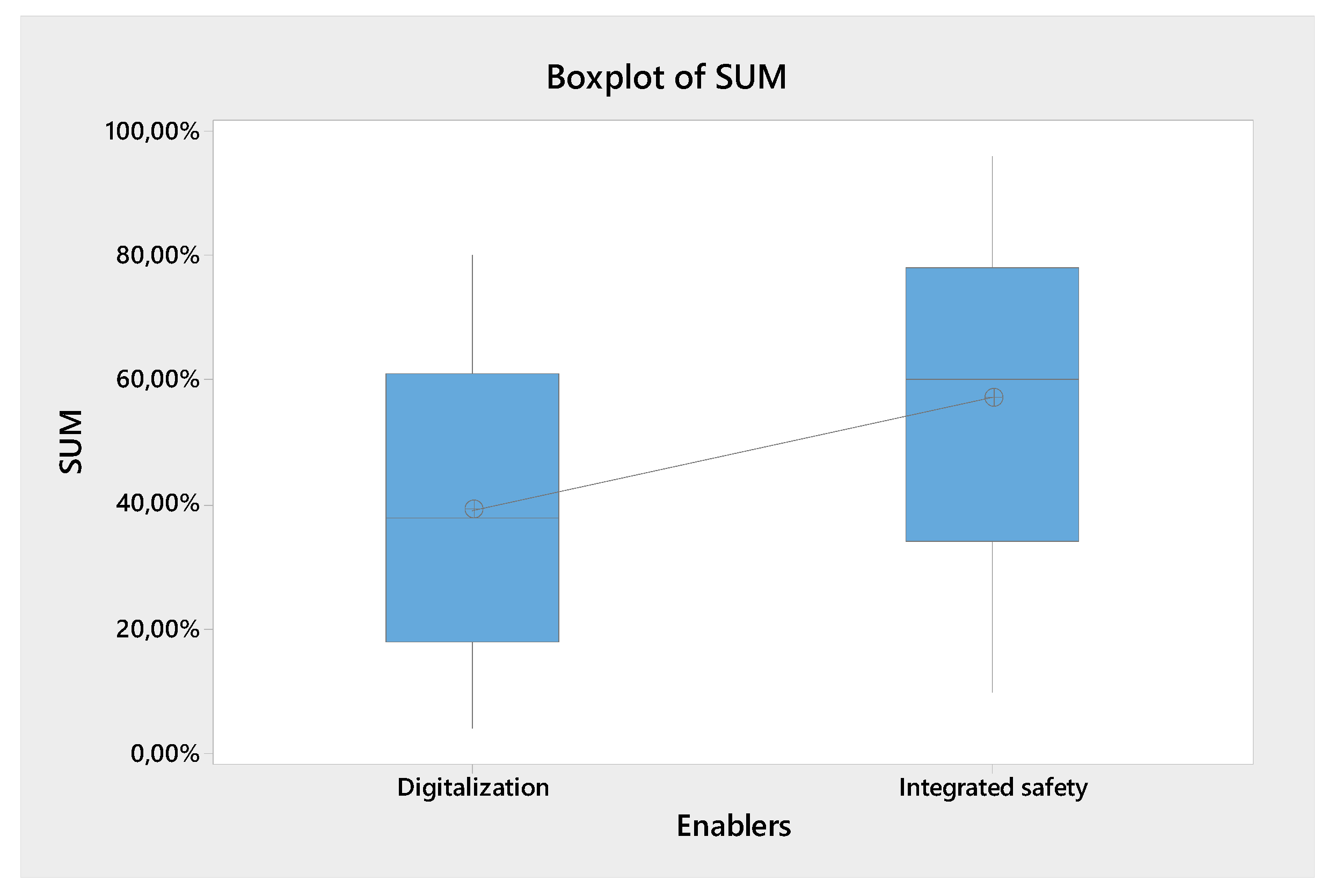
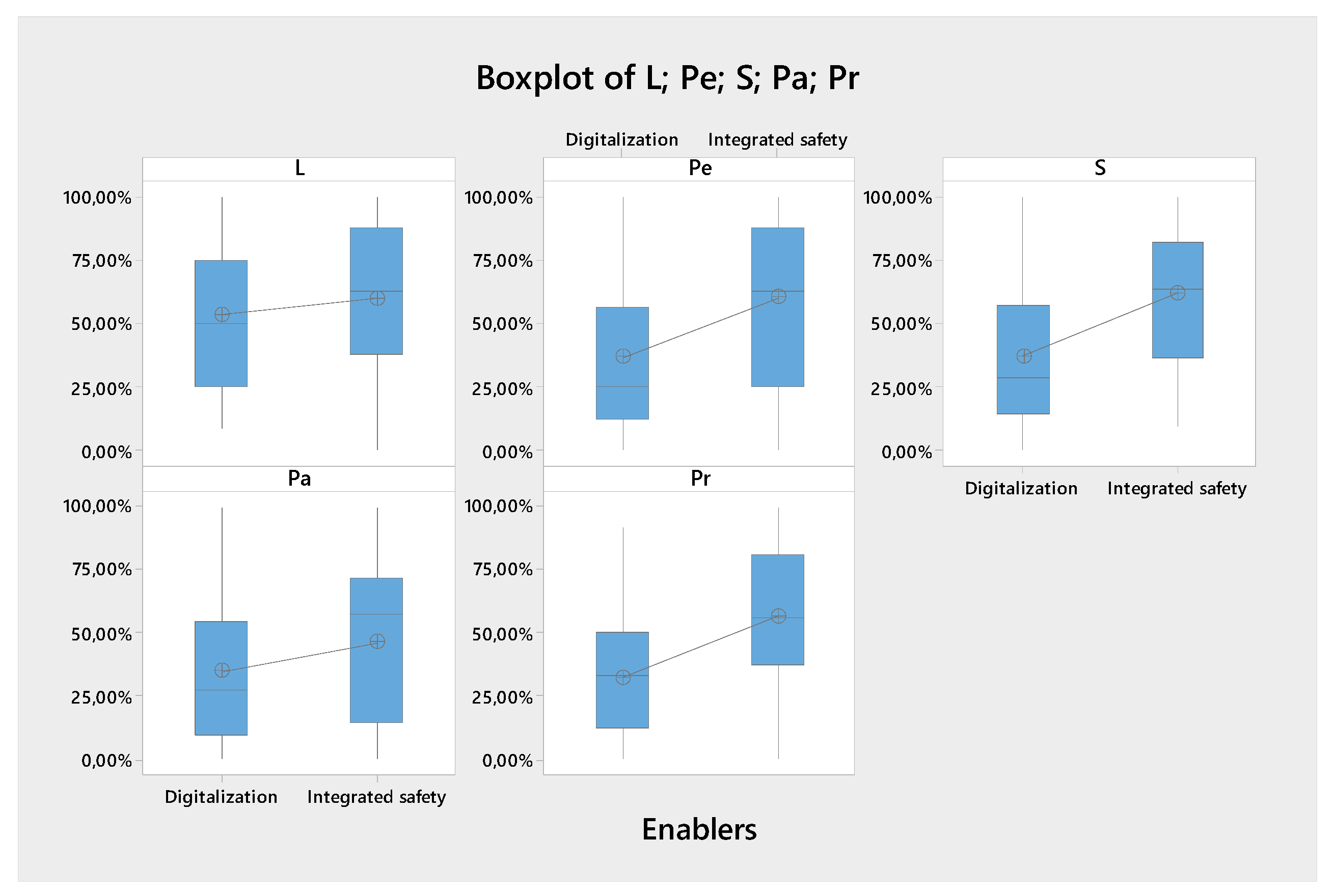
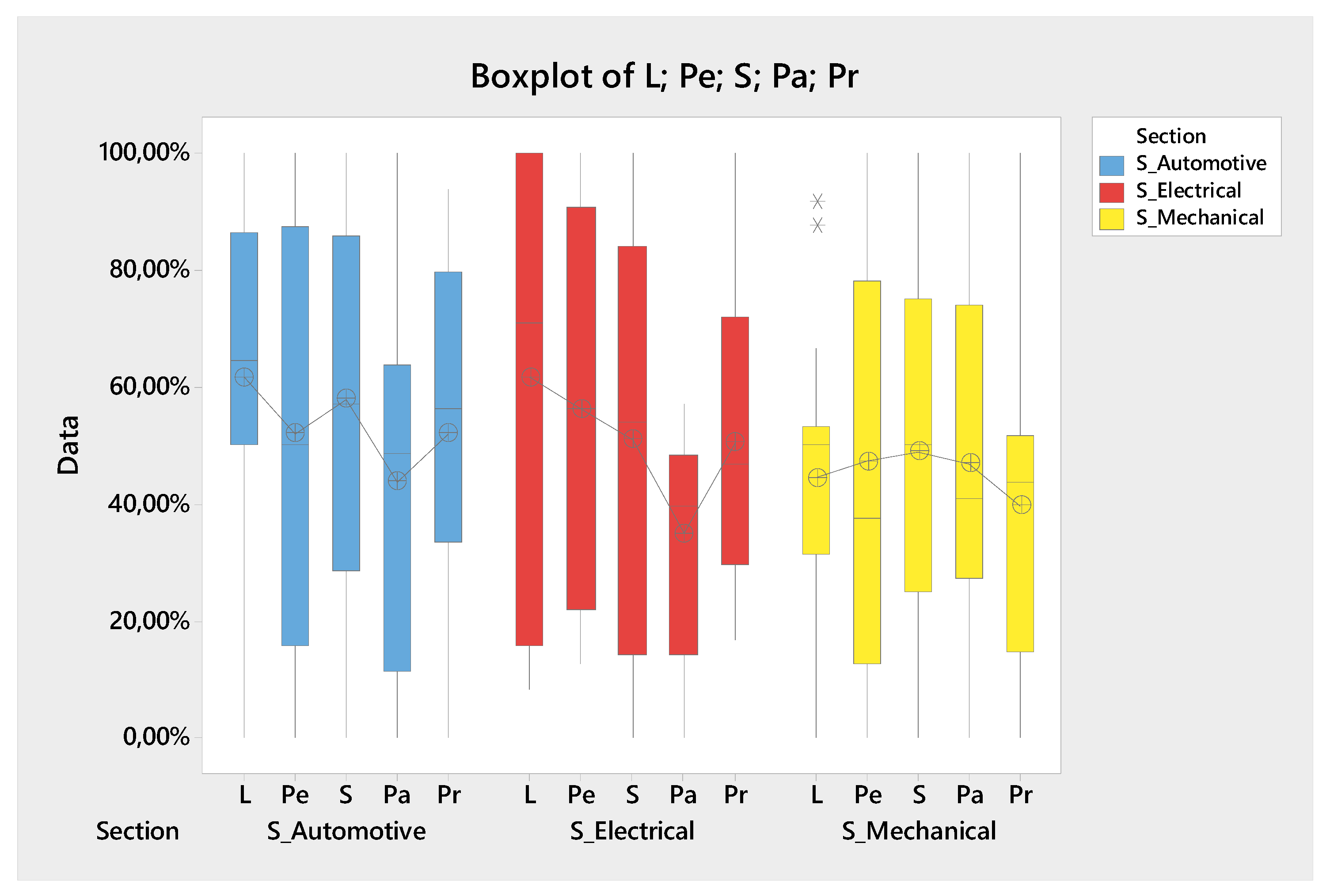
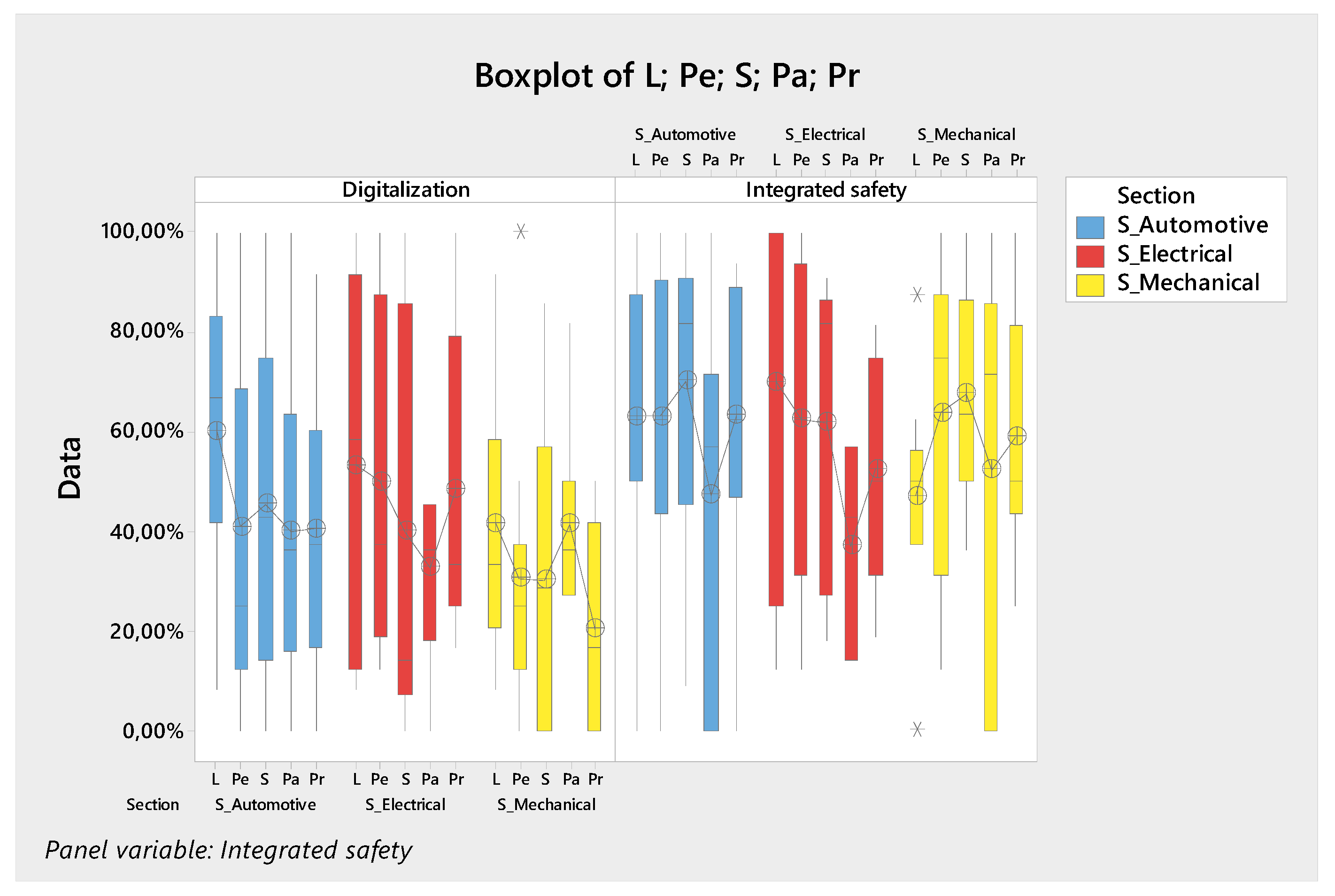
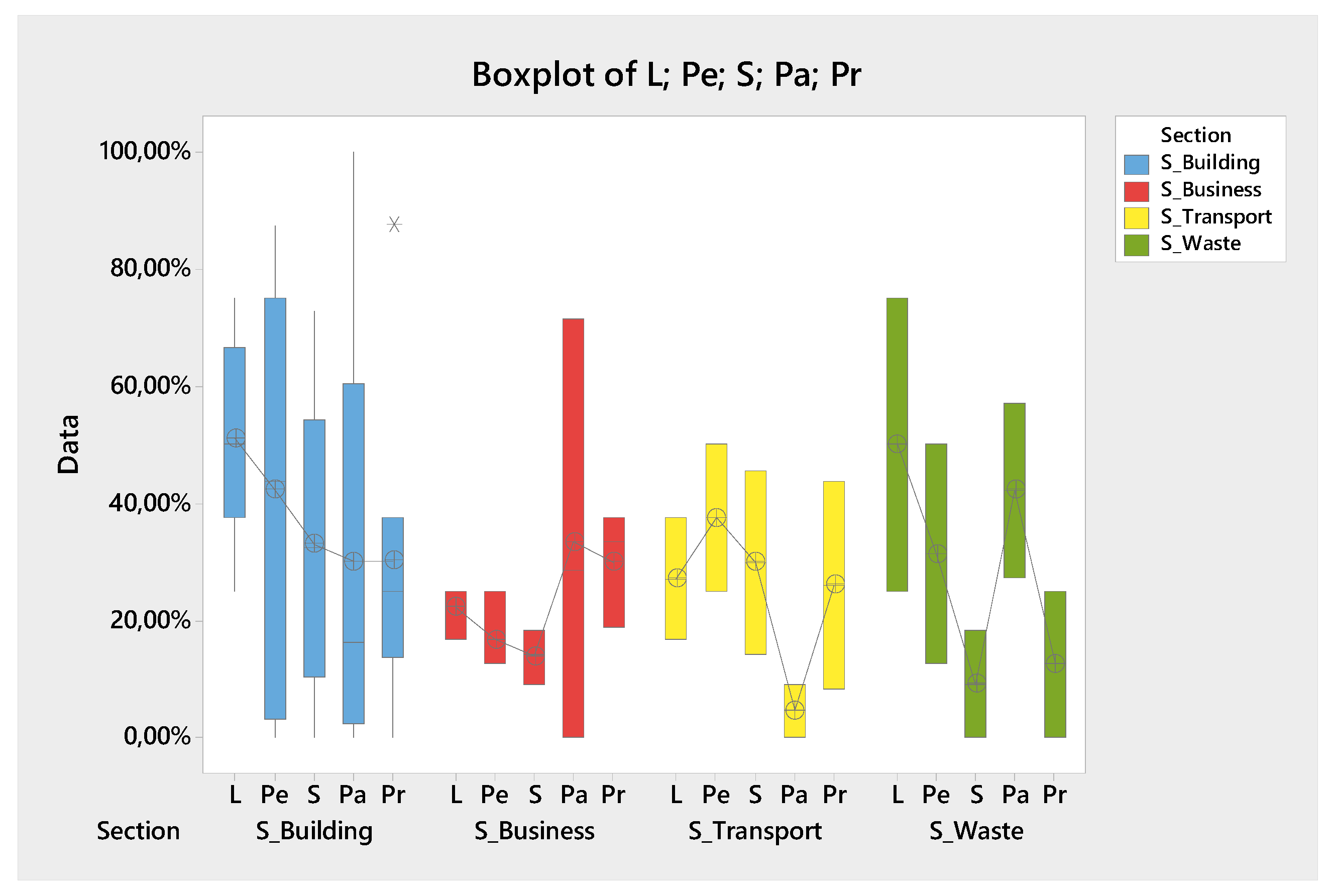
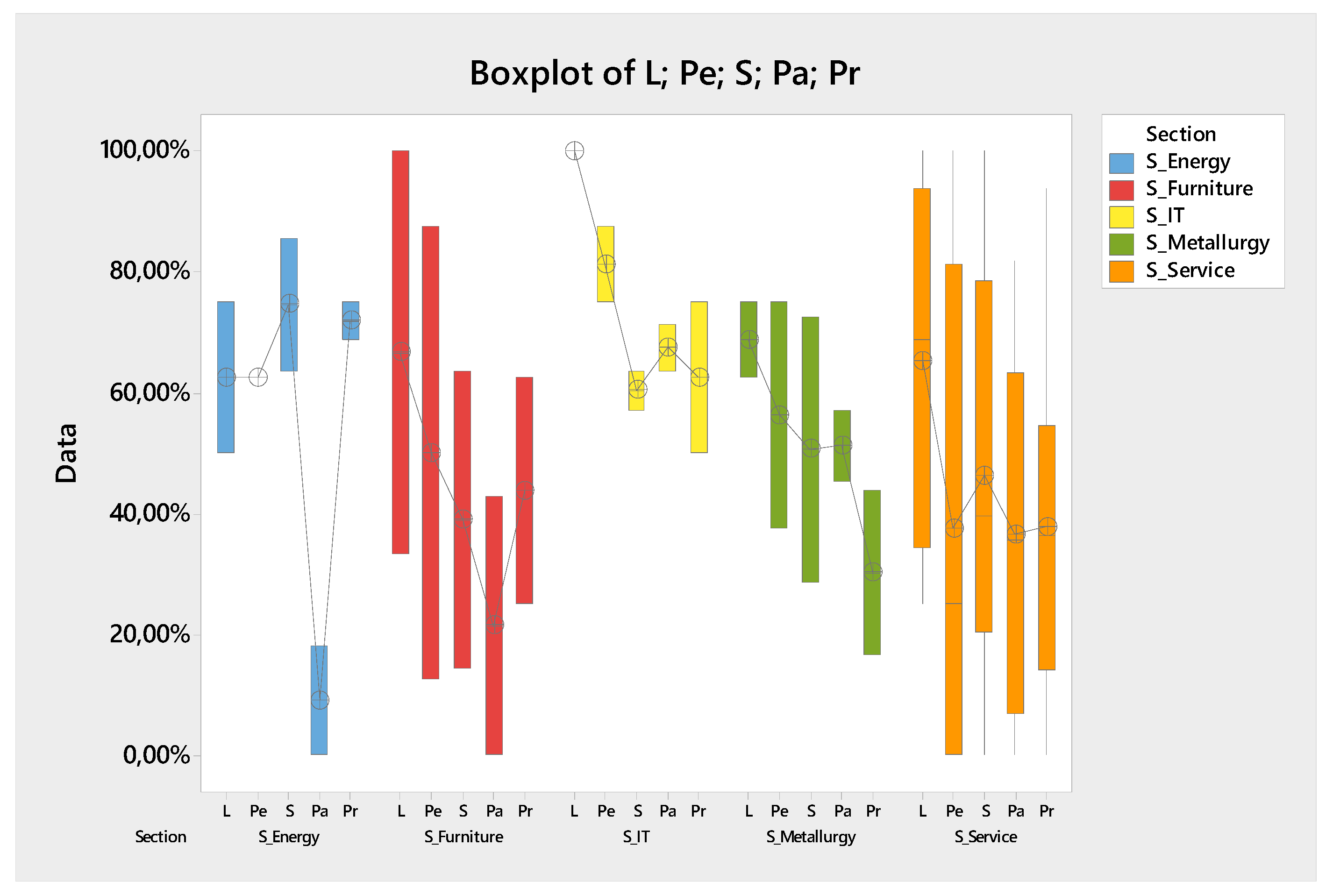
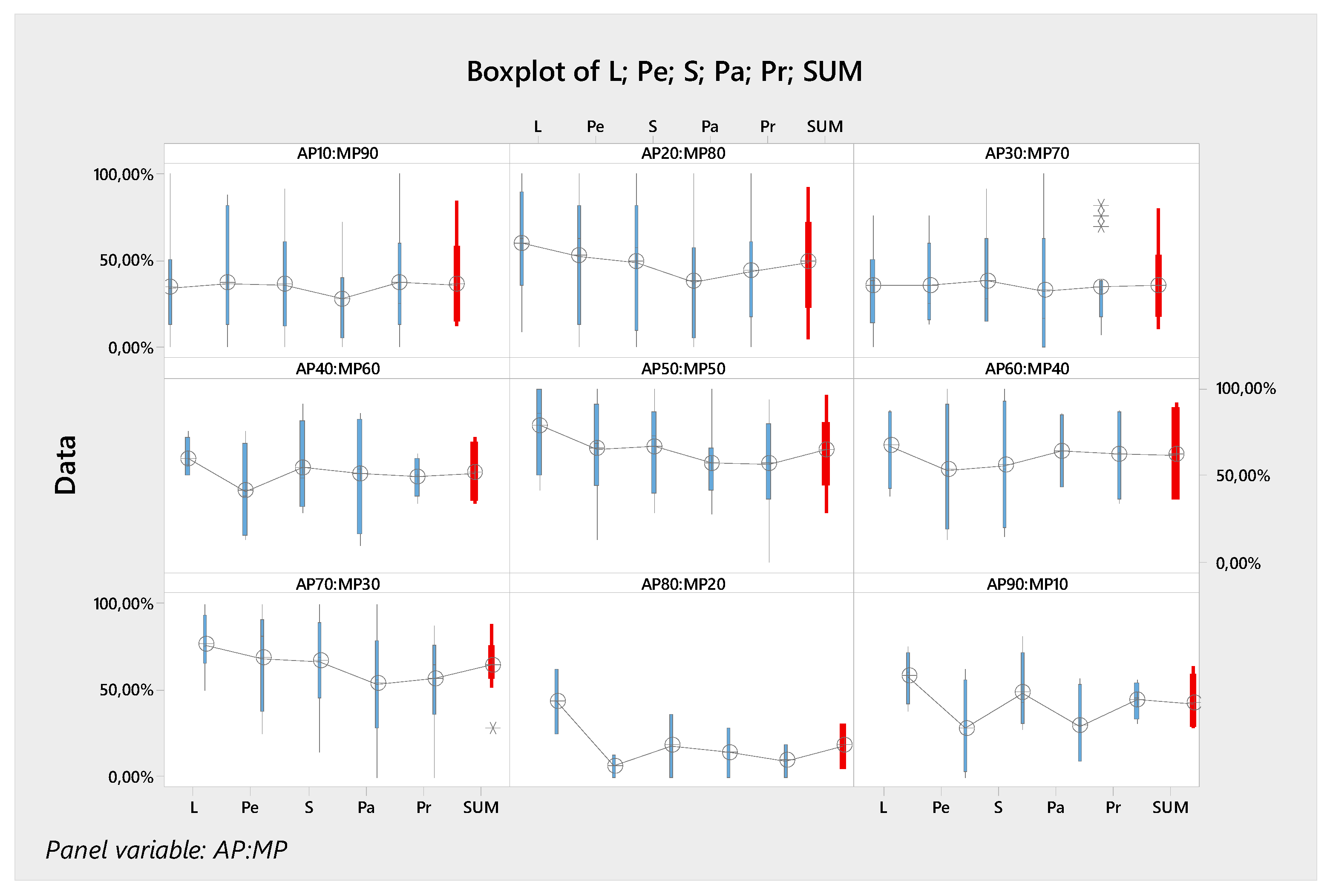
| Assumption Criterion | Description |
|---|---|
| Leadership (L) | Assesses: |
| - if these leaders encourage other employees to reach the set goals; | |
| - how the management of the organization build culture based on social responsibility stemming from the mission and vision of the organization; | |
| - if there are leaders within the organization who are examples of integrity and ethical behavior; | |
| - how management members develop the organization management system towards reaching perfect results. | |
| People (Pe) | Deals with how: |
| - the organization creates and modifies personnel plans; | |
| - recruitment, education and employees’ development are run; | |
| - the organization motivates employees by the system of remuneration and rewarding; | |
| - the organization encourages employees to join the process of organization efficiency improvement; | |
| - the transfer of responsibility and authority functions is done; | |
| - it assesses suitable working conditions; | |
| - carries out employee satisfaction surveys. | |
| Strategy (S) | Assesses: |
| - needs and expectations of involved parties; | |
| - how it uses inputs into strategy creation; | |
| - how the organization monitors external environment and internal efficiency; | |
| - if it performs comparison with suitable benchmarks. | |
| Partnership and Resources (Pa) | Deals with how: |
| - the organization establishes, builds and maintains relations with suppliers, customers and other partners; | |
| - the organization manages its financial sources, plans investments and maintains its assets; | |
| - the organization is able to manage the information and knowledge within the organization; | |
| - it guarantees them in the context of intellectual property protection. | |
| Processes, Products and Services (Pr) | Deals with: |
| - creation, implementation and subsequent management of processes; | |
| - how the organization looks into and evaluates the efficiency of its processes; | |
| - how their improvement is running; | |
| - how the organization manages the life cycle of its products, from their development through promotion until their delivery to customers; | |
| - how customers’ feedback is used as an input for product portfolio management. |
| Criterion | ISMS | OHSd | Total | ||||
|---|---|---|---|---|---|---|---|
| Num. of Questions | Max. Points | Total Points | Num. of Questions | Max. Points | Total Points | ||
| L | 2 | 4 | 8 | 3 | 4 | 12 | 20 |
| Pe | 2 | 4 | 8 | 2 | 4 | 8 | 16 |
| S | 2 | 4 | 11 | 1 | 4 | 7 | 18 |
| 1 | 3 | 1 | 3 | ||||
| Pa | 1 | 4 | 7 | 2 | 4 | 11 | 18 |
| 1 | 3 | 1 | 3 | ||||
| Pr | 4 | 4 | 16 | 3 | 4 | 12 | 28 |
| Total | 13 | - | 50 | 13 | - | 50 | 100 |
© 2020 by the authors. Licensee MDPI, Basel, Switzerland. This article is an open access article distributed under the terms and conditions of the Creative Commons Attribution (CC BY) license (http://creativecommons.org/licenses/by/4.0/).
Share and Cite
Turisova, R.; Sinay, J.; Pacaiova, H.; Kotianova, Z.; Glatz, J. Application of the EFQM Model to Assess the Readiness and Sustainability of the Implementation of I4.0 in Slovakian Companies. Sustainability 2020, 12, 5591. https://doi.org/10.3390/su12145591
Turisova R, Sinay J, Pacaiova H, Kotianova Z, Glatz J. Application of the EFQM Model to Assess the Readiness and Sustainability of the Implementation of I4.0 in Slovakian Companies. Sustainability. 2020; 12(14):5591. https://doi.org/10.3390/su12145591
Chicago/Turabian StyleTurisova, Renata, Juraj Sinay, Hana Pacaiova, Zuzana Kotianova, and Juraj Glatz. 2020. "Application of the EFQM Model to Assess the Readiness and Sustainability of the Implementation of I4.0 in Slovakian Companies" Sustainability 12, no. 14: 5591. https://doi.org/10.3390/su12145591
APA StyleTurisova, R., Sinay, J., Pacaiova, H., Kotianova, Z., & Glatz, J. (2020). Application of the EFQM Model to Assess the Readiness and Sustainability of the Implementation of I4.0 in Slovakian Companies. Sustainability, 12(14), 5591. https://doi.org/10.3390/su12145591






